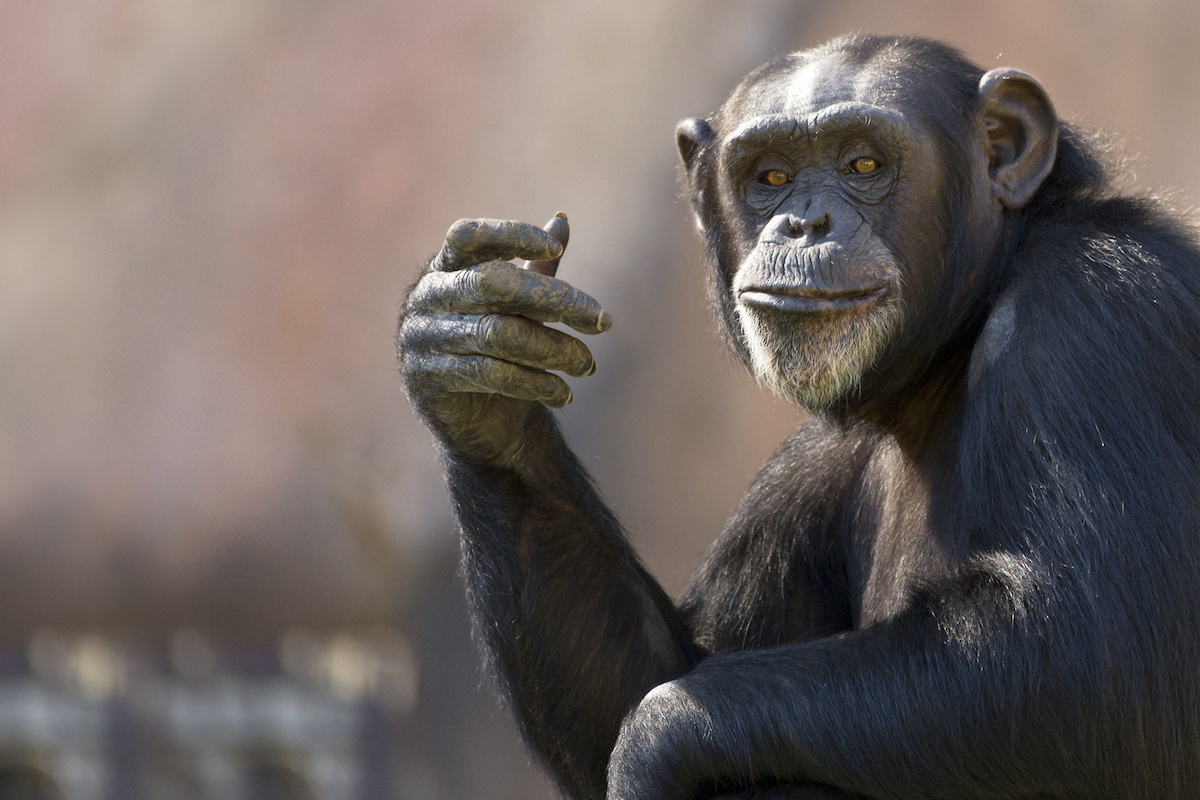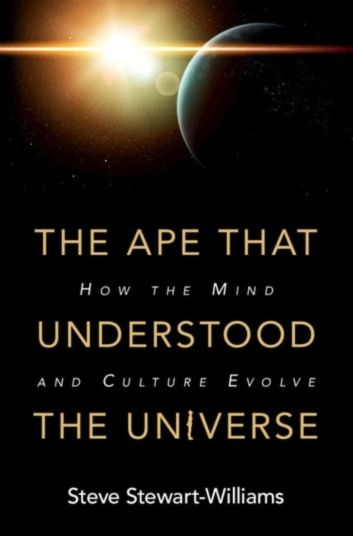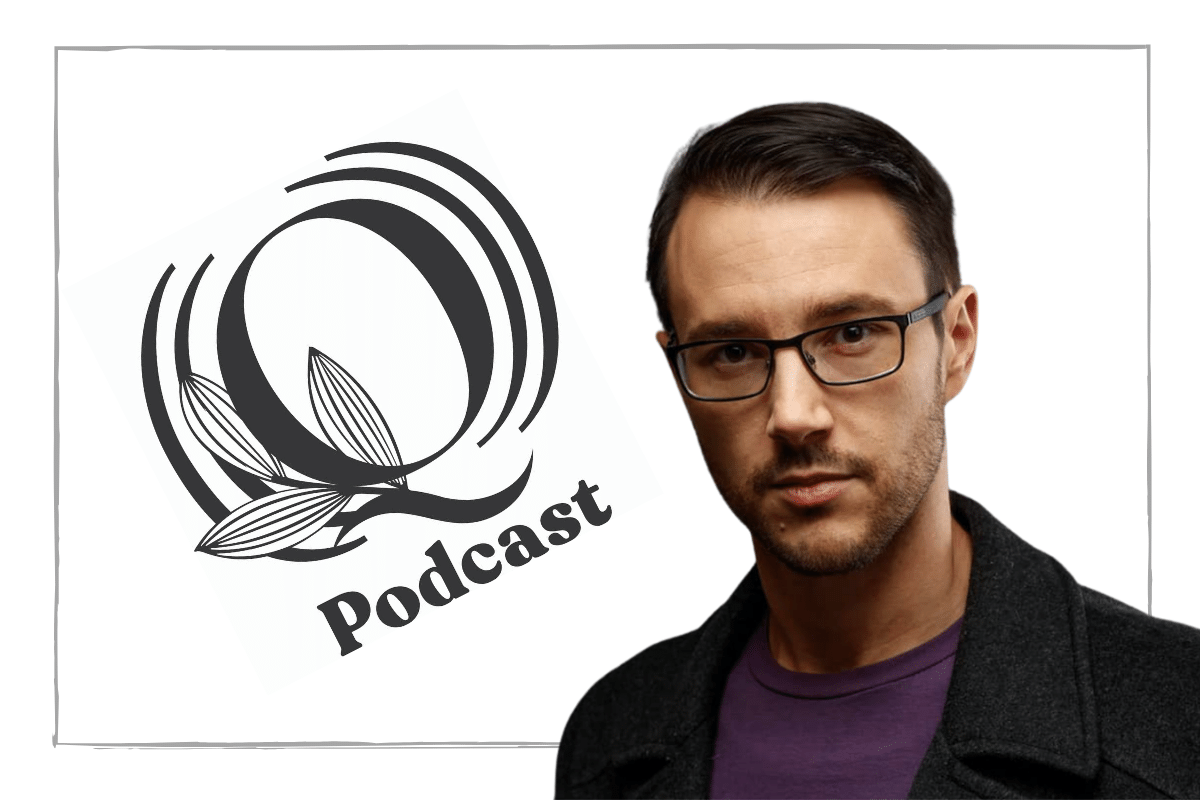Memes, Genes, and Sex Differences—An Interview with Dr. Steve Stewart-Williams
The meme’s-eye view says that memes are selected to the extent that they have effects on the people who encounter them that keep the memes alive in the culture: tunes that get stuck in our heads, for instance, or ideas that motivate us to talk about them, spread them, or impose them on other people.

Dr. Steve Stewart-Williams is an associate professor of psychology at the University of Nottingham, researching the evolution of altruism and human sex differences. The philosophical implications of evolutionary theory was the focus of his first book, Darwin, God and the Meaning of Life. The following is an interview with Stewart-Williams about his new book, The Ape that Understood the Universe.
Logan Chipkin: Your book begins with an alien’s perspective on modern humanity. This alien has apparently never encountered typical human behavior. How did you come up with this idea, and how did you subsequently decide which aspects of humanity to include in the alien’s report?
Steve Stewart-Williams: Like you say, I kick off the book by looking at human beings through the eyes of an alien scientist: a hyper-intelligent alien scientist from a species that doesn’t have males and females, doesn’t fall in love, doesn’t have families, and doesn’t have music or art or reality TV or anything else like that. And I ask: What would such a being make of us?

The short answer is that the alien would be deeply puzzled by our species and would have a ton of questions about us. Why are men and women so different from each other—but not as different as male and female peacocks or gorillas? Why are we so grossed out by the idea of incest? Why do we fall in love, and why do we get jealous if the person we’re in love with gets involved with someone else? Why do we tend to feed, love, and look after our own kids rather than the next-door-neighbor’s kids? Why are we so often so kind and cooperative? And how did a mere ape come to understand, however dimly, this vast universe of which it’s a part? These are all things that would perplex our alien scientist, but which we don’t normally think too much about because we’re so used to being human and so used to the things that humans do.
I’ve always enjoyed the alien’s-eye view when it’s come up in books and movies, and I’ve always found it a useful way to look at things from a different angle: to make the familiar strange, as William James put it. And somewhere along the line, it occurred to me that I could use the alien’s perspective to introduce the themes of the book. That’s what I do in the first chapter. The remainder of the book is my attempt to answer the questions raised by the puzzled alien. The key to answering them, in my view, is Charles Darwin.
LC: In the book, you distinguish between two classes of evolutionary hypotheses that explain human activity: those that explain human behavior (evolutionary psychology), and those that explain human culture (cultural evolutionary theory). Each field has received pushback from various ideological opponents. If there is some unifying aspect of evolutionary thinking that provokes resistance, what do you think it is?
SSW: Good question. The fields have a lot in common, but differ in important ways. Evolutionary psychology applies evolutionary principles to the mind and behavior; it’s all about natural selection operating on genes. Cultural evolutionary theory applies evolutionary principles to culture; it’s all about natural selection operating on cultural variants, or what Richard Dawkins called memes.
Like you say, both fields have received plenty of pushback. And the first thing I’d want to say about that is: good! Every field gets pushback and that’s exactly how it should be. It’s how we know whether or not a field has value, and how we refine it and make it better. Of course, criticisms of any field are of mixed quality: Some are good and some are bad—just like the ideas of the field itself. Overall, though, pushback is good (even if it’s not particularly pleasant to be on the receiving end of it).
But do evolutionary psychology and cultural evolutionary theory get pushback over-and-above the normal pushback that any field gets if it’s not simply ignored? Have they become punching bags in some circles, attracting more than their fair share of unfair and uninformed criticism?
For cultural evolutionary theory, I tend to think not. But for evolutionary psychology, the answer is almost certainly yes. There are several reasons for that, in my view. One is that, in some ways, the message coming out of evolutionary psychology is a little bleak, or at least seems so at first glance. A lot of people assume that, if something is a product of natural selection, it’s unchangeable and thus we’re stuck with it—and although that’s not necessarily the case, it does often mean that we can’t change it easily. A more specific concern is with the idea that there are evolved psychological sex differences. Many people hate that idea, perhaps because it might seem to work counter to the goals of the women’s liberation movement. I don’t think it actually does do that; we can treat women respectfully and fairly even if men and women aren’t identical on average. Still, those kinds of concerns mean that some people have a very low threshold for dismissing the field.
That said, let me just add that it’s important to deal with criticisms of the field fairly and squarely, and not just reject them based on speculations about the motives of the critics. At the end of the book, I have two appendixes that attempt to do just that. One is called “How to Win an Argument with a Blank Slater”; the other is called “How to Win an Argument with an Anti-Memeticist.” In each case, I try to deal with some of the more common arguments against evolutionary psychology and cultural evolutionary theory respectively, but without just dismissing them on the grounds that the critics are politically biased or whatever.
And I should also add that there are plenty of perfectly reasonable criticisms of both fields. I’m happy to admit, for instance, that some hypotheses in evolutionary psychology are pretty silly—especially those that aren’t tethered to well-established theories in evolutionary biology or to well-supported observations of other animals. I list some of the less-convincing evolutionary psychological hypotheses in the book.
LC: You provide the reader with many evolutionary thinking tools early in the book. Which do you think is the most important for laypeople to understand?
SSW: The single most important idea, without a doubt, is the concept of natural selection. It’s such a simple idea, but it sheds so much light on so many questions that have plagued human minds since human minds first evolved—including the question of how we and all other life came to exist on this planet.
When people think about natural selection, they tend to think about how it produces adaptations, like eyes and wings, and ultimately new species. What I focus on in the book, though, is how natural selection also applies to the human mind and human culture.
To see how, first consider how we use natural selection to explain anatomical features in other animals. Take the lion’s fangs, for instance. Why did these fearsome appendages evolve? Simple: They help the lion to capture and devour its prey. Lions with sharper, more fearsome fangs did better and had more offspring than other lions, and thus sharper, more fearsome fangs became more and more common over the generations. They were selected, in other words.
Or consider the fast legs of the gazelle. Why did they evolve? Again, it’s no great mystery: Fast legs help the gazelle to escape the clutches of hungry lions and other predators. Gazelles with faster legs lived longer and had more offspring, and thus faster legs become more and more common.
What evolutionary psychology does is it takes this explanatory framework and applies it to the mind and behavior. So, for example, why do people have the emotion of fear? Simple: Fear motivates us to escape or avoid danger and harm—to run away from the lion or avoid wandering too near to the edge of the cliff. Why do we have sexual desire? Simple again: Sexual desire motivates us to engage in certain activities that, for most of our evolutionary history (i.e., before we invented birth control), reliably resulted in the production of offspring. Why do we have parental love? To motivate us to protect and look after our offspring so that, one day, eventually, they can start the whole process again. And so on.
These examples are all fairly uncontroversial. As I explain in the book, though, natural selection sheds light as well on various aspects of human nature that are controversial, and that many people would rather chalk up to learning, socialization, and culture. This includes various sex differences, a range of mate preferences, and our tendency to favor relatives over unrelated individuals.
And on top of all that, a kind of natural selection operates in the realm of culture itself. To cut a long story short, selection in the realm of culture crafts cultural products whose ultimate function is to pass themselves on and keep themselves alive in the culture. Often, they do this by helping us or the groups to which we belong. Sometimes, though, cultural products keep themselves alive in the culture without benefiting us or our groups, or even while actively harming us.

LC: You make a point in the book that many people probably have not considered: “…people in the future may see our current efforts to ‘cure’ sex differences as equally cruel and equally pointless—as today’s equivalent of forcing lefties to write with their right hands, or of forbidding a son to play with dolls for fear it will make him gay.” Why do you think that such moral arguments for nonintervention are rarely expressed in the public discourse?
SSW: I think the main reason is that people assume that differences between the sexes are largely a product of sexist socialization and discrimination against women and girls. From that perspective, intervening just seems like the right thing to do. And just to be clear, I agree that we should give every member of both sexes every opportunity, and try to eliminate discrimination against girls and women wherever it still lurks (as well as eliminating any discrimination against boys and men).
Where I differ from some people is that I don’t think that sexism and discrimination are the whole story when it comes to sex differences—there’s a substantial innate contribution as well. And that means that, even if we were to completely eliminate sexism and discrimination, there’d still be differences between the sexes—differences just as ingrained and as resistant to change as handedness or sexual orientation.
If people were to fully appreciate this, the whole question of what to do about sex differences—and indeed, whether to do anything at all—would look very different. For people who deny that sex differences are substantially innate, any gaps between the sexes constitute direct evidence of discrimination and sexist socialization. And that means intervention is a moral must. But if they knew that many gaps have deep biological roots, they might be less gung ho about eliminating them. After all, if certain sex differences turn out not to be products of sexist parenting or unjust patriarchal norms, then maybe they’re not so terrible after all.
Of course, if the differences cause harm, we’d certainly want to eradicate them, regardless of whether or not they have an evolutionary origin. Men’s propensity for violence has an evolutionary origin, for instance, but it’s still worth fighting that. However, for sex differences that don’t cause anyone any harm, what’s the problem? Why not just let people be themselves, rather than making them miserable by trying to change their basic nature?
LC: In the section of the book in which you explore the concept of “memes,” you provide an amusing, meme-oriented take on the evolution of the scientific method. How can the meme’s-eye view aid the layperson in understanding the society around us?
SSW: I’m a big fan of the meme’s-eye view of cultural evolution. It’s very like the gene’s-eye view of evolution, but applied to memes rather than genes. The gene’s-eye view states that genes are selected to the extent that they have effects on their owners that help to keep them in the gene pool: building sharper fangs or faster legs, for instance, or a tendency to care for one’s offspring. The meme’s-eye view says that memes are selected to the extent that they have effects on the people who encounter them that keep the memes alive in the culture: tunes that get stuck in our heads, for instance, or ideas that motivate us to talk about them, spread them, or impose them on other people.
Critics often assume that the meme’s-eye view implies that culture is just a gigantic collection of memetic viruses, which spread themselves by working against our interests. I don’t think that’s right, though. Most of the time, the memes that do best in a culture are those that are good for us or good for the groups we belong to. In other words, most of the time, the meme approach is no different than approaches that emphasize the adaptive value and usefulness of culture: dual inheritance theory, cultural group selection, and the like. The reason I like the meme approach is that it also provides an explanation for aspects of culture that are not good for us or our groups: things like earworms and smoking and the belief that one should sacrifice oneself for one’s faith. The meme’s-eye view highlights the fact that, in the final analysis, memes are selected to the extent that they’re good for themselves, not for us (although they often are good for us). As such, memetics provides an overarching account of the process of cultural evolution—one that incorporates the other theories but also goes beyond them.

The one arena where things work a bit differently is the one you mentioned: science. In the normal course of events, memes are often not selected for accuracy; they’re selected because they’re catchy or memorable or just generally appealing. But science is set up in such a way that—ideally, at least—it favors accurate memes over less accurate but catchy ones. With the scientific enterprise, what we’ve done is set up an arena in which certain types of memes—scientific theories—compete against each other, and the ones that best explain the facts are the ones that we preserve and propagate. In effect, through the invention of science, our species discovered a way to selectively breed memes for greater and greater accuracy, just as we selectively bred dogs to be friendlier and fruit to be sweeter. It’s through this process that we’ve become an ape that can understand the universe, at least to some degree.
LC: You spend some time rebutting the criticism of evolutionary explanations that say they are “just-so stories.” In general, what makes evolutionary explanations of human psychology better than their sociocultural competitors?
SSW: Well, the only thing that makes any explanation any good is that it’s true! So, there are plenty of evolutionary explanations that I think are worse than their sociocultural competitors, just because the sociocultural explanations are more accurate. In my view, for example, cultural explanations of religion are more accurate than evolutionary ones. The evolutionary explanations overextend the adaptationist mode of explanation—a mistake the paleontologist Stephen Jay Gould dubbed panadaptationism.
At the same time, though, evolutionary explanations are often better than explanations that chalk everything up to sociocultural factors, for the simple reason that—in these cases—the evolutionary explanations are more accurate. This is true, for instance, when it comes to sex differences in interest in casual sex, sex differences in aggression, certain mate preferences, incest aversion, and kin favoritism. Various lines of evidence suggest that these things have an evolutionary origin: They’re found across cultures; they’re resistant to social influence; they’ve been linked to prenatal hormonal exposure; and they’re found in many other species—species that are subject to similar Darwinian selective pressures as humans. Culture may help to color these tendencies, channel them, magnify or minimize them. But their ultimate origins lie in our evolutionary past.
LC: The publication of your book corresponds to a time of a seeming resurgence of science denial. Was this what prompted you to write The Ape That Understood the Universe now, or was the timing coincidental?
SSW: It wasn’t deliberate; it was just good timing—or bad timing, depending on your point of view. I began work on the book in 2013, shortly before I started noticing this latest resurgence of science denial—and in particular, the denial of the reality of sex differences. In many ways, this is just a resurgence of 1970s-era gender silliness. It’s quite frustrating, though, because just as I thought we were finally putting these ideas behind us, we’ve been sucked straight back into the morass. And although it’s not new, it does seem to have come back with a vengeance.
Actually, I should add that, although much of it is not new, some aspects are. In particular, the denial that male and female are even valid concepts, and the claim that sex is a spectrum rather than a binary, is quite a novel departure. And it’s quite amazing and frightening how willing so many people are to go along with something so utterly radical and discrepant with common sense, let alone with biological science. So, let me say a little about sex and gender.
According to biologists, sex is ultimately about the kind of sex cells an individual produces. Individuals with the body type that produces the smaller sex cells (sperm) are male; those with the body type that produces the larger sex cells (eggs) are female. Humans only produce two types of sex cells, and thus there are only two sexes in our species.
Now, that doesn’t mean that everyone fits tidily into the male or female categories. Most people do, but a small number don’t; they’re intersex. Intersex people are not easily categorized as male or female in terms of their chromosomes, their anatomy, their brain anatomy, or their sense of themselves as men or women. This doesn’t change the fact, though, that there are only two sexes in our species; intersex isn’t a third sex, because intersex people don’t produce a third type of gamete. Two sexes is what selection favoured.
Of course, there’s a lot of psychological variation within both sexes. Does that imply that sex is a spectrum, rather than a binary? No. Masculinity and femininity are spectrums, but sex is not. And no one ever thought that all men are equally masculine or that all women are equally feminine. We’ve always known that men and women differ in terms of how masculine and feminine they are. It’s strange that people now want to say that this variation implies that actually only the most stereotypically masculine men are fully men, and only the most stereotypically feminine women are fully women, and that everyone else lies somewhere in between. The whole idea involves quite extreme stereotyping about what it means to be a man or a woman! It seems much more sensible to me to say that there are two sexes in our species, that the vast majority of people are easily categorised as one or the other, and that people belonging to each sex vary greatly in terms of both masculinity and femininity (although there are also average differences between the sexes in these traits—differences that are partially innate).
We can accept all of this while fully supporting the rights of transgender people and respecting their dignity as human beings.
You can learn more about Steve Stewart-Williams, his research, and his books at https://www.stevestewartwilliams.com. His new book, The Ape that Understood the Universe, is out now in Kindle, eBook, and hardcover format. The audiobook version will be released soon, and the paperback edition is expected to be published in Fall 2019. You can follow him on Twitter @SteveStuWill












